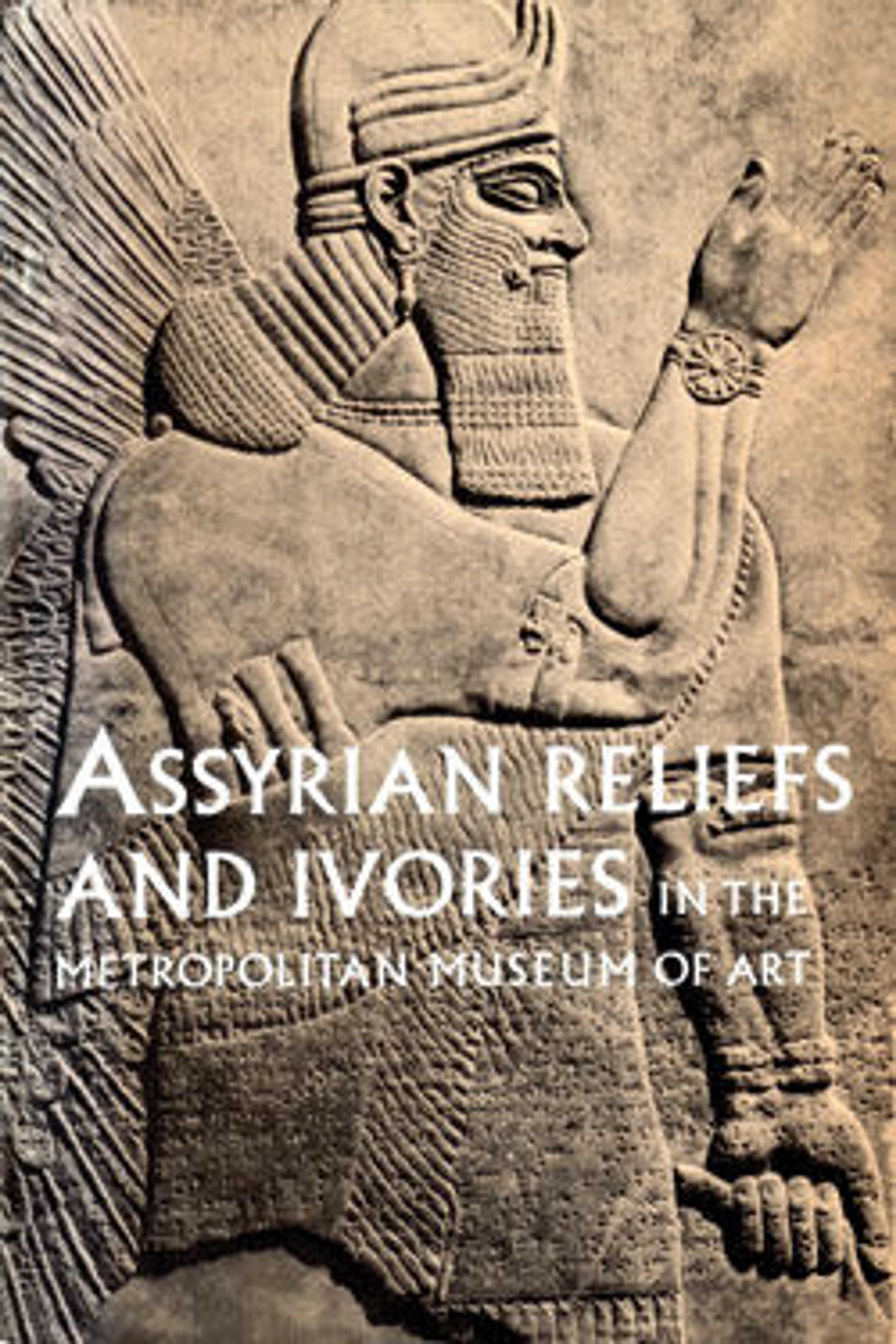Relief panel
The beardless male figure depicted on this panel from the Northwest Palace at Nimrud (ancient Kalhu) is almost certainly a eunuch. Many such figures appear in Assyrian art, as eunuchs were central to court life. As they could not have children themselves, eunuchs were generally perceived as less of a threat to the king and his dynasty; however, some eunuchs did become enormously powerful. Those depicted close to the king are often shown with specific functions, in this case that of an arms bearer: the figure carries a mace, bow, quiver of arrows, and sword, all of which were most likely those of the king. It is probable that this role was a privileged one, and that to be depicted in this way reflected a very high rank at court. Like other mortal and supernatural figures shown in the reliefs, he is richly dressed, wearing finely embroidered clothes, earrings, a collar, an armlet with animal-head terminals, and a bracelet with a large rosette. The lower part of the relief is a modern reconstruction.
On the left side of the relief can be seen part of a stylized "sacred tree," a symbol that appears repeatedly in the palace. The tree represents no real plant, and the form in which it is depicted varies within Neo-Assyrian art. The tree is generally thought to be a symbol of the agricultural fertility and abundance, and probably the more general prosperity, of Assyria.
The "Standard Inscription" listing the achievements of Ashurnasirpal II (r. 883–859 B.C.) runs across the panel. The inscription is carved in cuneiform script and written in the Assyrian dialect of the Akkadian language. After giving his ancestry and royal titles, the Standard Inscription describes Ashurnasirpal’s successful military campaigns to east and west and his building works at Nimrud, most importantly the construction of the palace itself. The inscription is thought to have had a magical function, contributing to the divine protection of the king and the palace.
On the left side of the relief can be seen part of a stylized "sacred tree," a symbol that appears repeatedly in the palace. The tree represents no real plant, and the form in which it is depicted varies within Neo-Assyrian art. The tree is generally thought to be a symbol of the agricultural fertility and abundance, and probably the more general prosperity, of Assyria.
The "Standard Inscription" listing the achievements of Ashurnasirpal II (r. 883–859 B.C.) runs across the panel. The inscription is carved in cuneiform script and written in the Assyrian dialect of the Akkadian language. After giving his ancestry and royal titles, the Standard Inscription describes Ashurnasirpal’s successful military campaigns to east and west and his building works at Nimrud, most importantly the construction of the palace itself. The inscription is thought to have had a magical function, contributing to the divine protection of the king and the palace.
Artwork Details
- Title: Relief panel
- Period: Neo-Assyrian
- Date: ca. 883–859 BCE
- Geography: Mesopotamia, Nimrud (ancient Kalhu)
- Culture: Assyrian
- Medium: Gypsum alabaster
- Dimensions: 61 x 73 1/2 x 3 1/4 in. (154.9 x 186.7 x 8.3 cm)
- Credit Line: Gift of J. Pierpont Morgan, 1917
- Object Number: 17.190.2079
- Curatorial Department: Ancient West Asian Art
More Artwork
Research Resources
The Met provides unparalleled resources for research and welcomes an international community of students and scholars. The Met's Open Access API is where creators and researchers can connect to the The Met collection. Open Access data and public domain images are available for unrestricted commercial and noncommercial use without permission or fee.
To request images under copyright and other restrictions, please use this Image Request form.
Feedback
We continue to research and examine historical and cultural context for objects in The Met collection. If you have comments or questions about this object record, please contact us using the form below. The Museum looks forward to receiving your comments.
